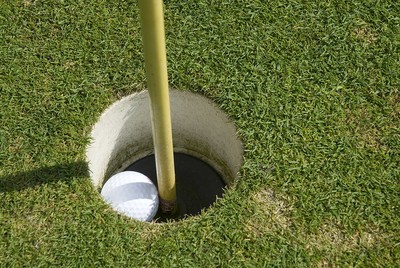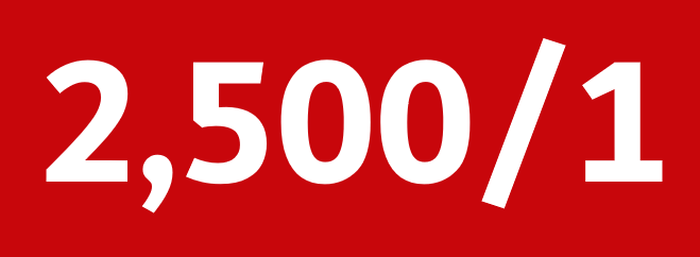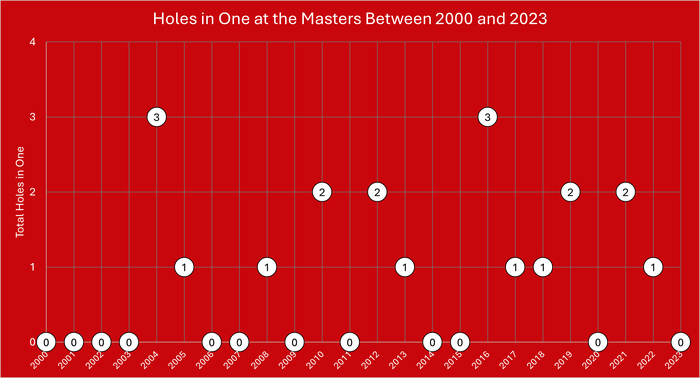 When it comes to betting on golf most punters tend to stick to the main market, which is the outright winner of a tournament. Each way betting within this market is especially popular due to the large field sizes. There are lots of other markets offered though and among the more novelty ones that still attract a decent volume of bets, hole in one betting is the area we are looking at here.
When it comes to betting on golf most punters tend to stick to the main market, which is the outright winner of a tournament. Each way betting within this market is especially popular due to the large field sizes. There are lots of other markets offered though and among the more novelty ones that still attract a decent volume of bets, hole in one betting is the area we are looking at here.
The main (and often only) market that falls under this umbrella is a bet on whether or not there will be an ace at a specific tournament. This is a simple binary bet, yes or no, and you are betting on whether any player will score a hole in one at any point during the tournament.

On the face of it, there really isn’t too much else to explain or understand. If you think a particular tournament will see a hole in one, back yes, and if not, back no. That’s it! However, for more info about the stats around holes in one, one of golf’s greatest ever gambles, any rules relating to this market that you should be aware of, as well hole in one betting tips and strategy, and any alternative or similar markets, read on.
Rules to Look Out For
Given this market very much does what it says on the tin there isn’t much for punters to think about. However, the following are worth noting:
- Tournament proper – bets apply to the tournament proper, not any warm-up rounds, preliminary events or qualifiers
- All aces count – bets do not just apply to par threes and any ace, be it on a par four, or even (Bryson DeChambeau, we’re looking at you) a par five, will count for bets placed on “Yes”
- But it has to be a one – only true holes in one count, so if a player puts their first ball in the water but aces a retaken tee shot to rescue par, this would not count as a hole in one
- Reduced holes or delayed finishes – if bad weather or any other issue reduces the duration of a tournament, bets will stand as long as at least 36 holes are played. However, bets on “Yes” will still be winners if there is an ace but the tournament is abandoned or curtailed before this point. If a tournament is extended into the Monday due to bad weather, holes in one will still count provided they are within the originally specified number of rounds/holes
- Play-off holes in one – if a play-off is required to determine the winner of a tournament and a hole in one is scored in the play-off, this would potentially be a grey area. It has never happened, to the best of our knowledge, and the chances of it occurring are so small that it is not covered by the rules of most bookies. We suspect it would count as “Yes” but if in doubt, contact the betting site’s customer service staff
- Wrong hole – unsurprisingly, getting your ball into the wrong hole, for example on a double green, does not count
Most of these rules will be the same at all bookmakers; the one that is most likely to vary is with regards to tournaments that are reduced in length. Some bookies may let all bets stand irrespective, whilst others may void all bets, and others may use 54 holes as the cut-off.
Other Hole-in-One-Type Bets
Most betting sites only offer the main market as detailed above, when it comes to hole in one betting. However, you may see some others for the biggest events at the very best golf bookies, whilst there are other broadly related bets you might want to consider.
- Multiple holes in one – this will usually be a yes/no bet on whether there will be two or more aces at an event but you may also be offered the chance to bet on an exact number too
- Hole in one at a specified hole – bets on this market will relate only to a particular hole, typically the shortest/easiest par three
- Particular round – a bet on whether there will be a hole in one in the first round. You may also be able to bet on the second, third or fourth rounds, with only aces in the named round counting towards the market
- Player ace – for the ultra-bold golf punters, you can opt to back a specific player to record an ace. Odds tend to be around the 80/1 to 200/1 mark, with most players between 100/1 and 150/1 for most events
- Albatross – some golf bookmakers offer the chance to bet on an albatross being scored. This might be a hole in one (on a par four) but any score of three under on a single hole will also be a winner
Hole in One Betting Strategy

Holes in one are relatively rare and we will look at how often they occur below. Because of this, variance is reasonably high and you will need a little bit of luck if you decide to back yes, no matter what. That said, as with almost all bets, there are certain things you should look at when trying to weigh up a hole in one bet. This is very much a stats-based market and so there isn’t all that much to consider, which means that finding value is particularly tricky as there is not as much for the oddsmakers to potentially miss. Aside from the underlying frequency with which pros hit holes in one, other factors to consider include:
- Course – the course is a big factor in whether there will be an ace or not. We look at specific factors below but if a tournament has a regular venue, looking back at how often holes in one have occurred is a good starting point. As we shall see, Augusta and the Masters have been particularly good for hole-in-one backers in recent times
- Field size and number of rounds – most tournaments are played over 72 holes, LIV aside, but not all. Tournaments played over fewer holes obviously have a lower chance of a hole in one. Similarly, field size is usually between around 130 and 156 but many invitationals and some special events have much smaller fields, making a hole in one less probable.
- Weather – if calm, mild weather is forecast scoring will be lower in general and, of concern to us, holes in one will be more likely. Receptive greens typically help, whilst super-hard greens, rain and, especially, high winds, make holes in one less likely
- Course set-up – there aren’t huge sums of money wagered on this market and so bookies do not work especially hard researching their odds. It is possible they might miss, or be slow to react to, important information about the course set-up. Holes are shortened or lengthened, but most importantly pin positions are critical and if you can access this information ahead of the crowd (or the bookies) you may be able to find value in the hole in one markets
- Reachable holes – a standard par-72 course has four par threes but some courses may have two and others may have four. Moreover, some venues may have one or even more driveable par fours and the more chances there are for a hole in one, the better your chances of landing a bet on yes
What Are the Chances of an Ace?
There are lots of different ways of looking at this question and many different types of stat that could be considered. For example, a US-based site that specifically offers insurance against a hole in one claims that the figure for an amateur scoring a hole in one on a par three is 12,500/1. For a pro, they put that figure at 2,500/1 … which makes us think they haven’t see us play golf if they think a pro is only five times more likely to land an ace

Other sites have figures for an amateur ranging from less than 10,000/1, right up to over 100,000/1 but we feel an insurance company has both the skin in the game, and the expertise in stats and probability, to come up with a fairly reliable figure. Of course, so much depends on the level of the players and the difficulty of the course, and this to a large extent explains why one might see such varied probabilities.
Using that 12,500/1 figure, the insurance company state that an amateur tournament with 100 players, playing one round of a course with four par threes, will see a hole in one around one in 32 times. In other words, there is approximately a 3% chance of an ace.
However, such stats are largely meaningless for someone looking to back a hole in one in a pro tournament. Thankfully, once again, those insurance experts are on hand to help. They consider a standard PGA Tour tournament with a field of 144, all of whom are pros (which would not necessarily be the case but even so). They state that on any one day, there is around a one in 4.5 (or 22.2%) chance of an ace, meaning that over a standard 72-hole tournament they claim it is “roughly 1 in 1”. In truth we aren’t entirely sure what they mean by 1 in 1 – and we suspect they aren’t either. However, using their one in 4.5 chance number we actually get the probability of a hole in one during a standard tournament to be around 65%.
An alternative site that seeks to register all holes in one that are hit offers similar, though more detailed stats. They have “tracked” well over 100,000 holes in one, so they have a pretty good data set! They claim that a tour pro’s chances of hitting an ace are about 3,000 to one, with that rising to 5,000/1 for a “low-handicapper” (they don’t specify how low) and 12,000 to one for an “average” player.
Holes in One in the Masters at Augusta
What we really care about are real stats from the main golf tours. One simple place to start is the first major of each calendar year, the US Masters, which is particularly instructive as it is the only one of the big four played at the same venue each year. The 16th tends to be particularly good for aces, especially on Sunday with that iconic pin placement that allows the ball to be fed down to the hole. According to the official US Masters site there have been aces hit at all four of Augusta’s par threes. However, as we can see below, they are far from evenly distributed.
| Hole (Name) | Typical Yardage | Total Holes in One (Since 2000) |
|---|---|---|
| 4 (Flowering Crab Apple) | 240 | 1 (0) |
| 6 (Juniper) | 180 | 6 (3) |
| 12 (Golden Bell) | 155 | 3 (0) |
| 16 (Redbud) | 170 | 24 (17) |
There are various reasons for changes in the frequency of holes in one in general and at the different holes. Course and equipment changes are factors, whilst with a small sample size of just 34 aces there is bound to be significant variance.
The 2023 Masters, when incidentally there was not a hole in one scored, was the 87th edition of this captivating tournament. So there have been 34 holes in one in 87 Masters, a rate of just under half a hole in one per tournament, or one being scored every 2.56 events (though a number of years have seen two registered and there was three in both 2004 and 2016). But there has definitely been a trend of holes in one being very common over the last 20 years or so, as we can see:

So as we can see, in the 21st century, there have been a massive 20 aces in just 24 tournaments. Several years with multiple holes in one mean that “Yes” in the primary hole in one market was a winner in 12 out of those 24, giving us a strike rate of exactly 50%. Odds over evens would, based on that simple analysis, represent value, though given the first ace of the new millennium was not until 2004, one could argue that even a shade under would be value.
That begs the question as to what prices are typically offered. Well, unfortunately, if unsurprisingly, you will not get anywhere even close to evens. Typical prices for an ace at the Masters range from around 1/2 to a far-from-generous 7/10 at best.
The Hole-in-One Gang: Betting’s Best Coup

As you would probably expect, making a killing betting on holes in one would take more than just looking at recent history. In fact, in the modern era you are unlikely to be able to find real value in this market, with all bookies very well aware that over a four-day tournament there is typically at worst a 50/50 chance of at least one ace. Depending on the course, field and weather, that might even become more like 65/35, or even 70/30 in favour of a hole in one. But it wasn’t always like that!
There have been some great betting coups over the years where punters have used fair means and foul, and everything in between to get the better of the bookmakers. Racing has Barney Curley’s Yellow Sam bet (among others) but in golf, it is a bet on a hole in one that is most well known.
In 1991 bookmakers did not routinely offer bets on a hole in one and were not aware just how likely they really were. When two Essex gents who were well versed in both maths and the betting industry calculated the chances of a hole in one at any given tournament to be about 50%, they thought they might just be on to something.
As detailed above, at that sort of strike rate, anything over evens is going to offer you value, but canny duo Paul Simmons and John Carter did much better than that. They travelled around bookies all over the country, largely indies, and managed to place bets at hugely inflated prices that varied greatly from shop to shop. They targeted five tournaments in 1991, including the Open and the US Open, and even went as far as placing some accas on there being aces at more than one of the five.
They kept a lot of their stakes relatively low – with most of their bets being priced so far over the true odds they could afford to. In the end, as well as being very clever, they were very lucky, as a hole in one was scored in all five tournaments, meaning that all the doubles, trebles and larger accas they made won. They landed around £500,000, which would be the equivalent of around £1.1m today!